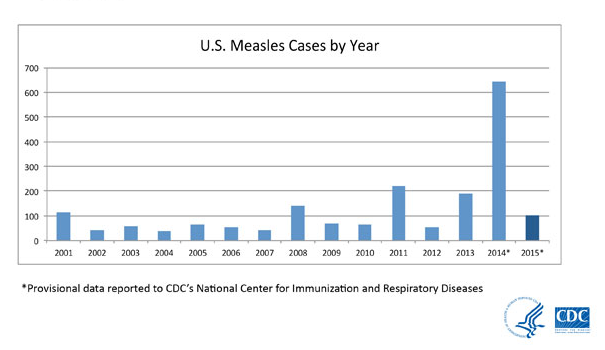Getting vaccinated doesn’t just impact your health — it can also affect the health of your entire community.
The current measles outbreak in the United States is the result of unusually high numbers of unvaccinated people in certain communities.
CDC / Via cdc.gov
Many of those communities have low vaccination rates because parents are choosing not to vaccinate their kids. “We almost eliminated measles in the United States, but because of the clustering communities refusing the measles vaccine, we’re seeing more outbreaks of it,” Dr. Jon Abramson, professor of pediatrics at Wake Forest Baptist Medical Center, tells BuzzFeed Life. As of January 30, over 102 cases were confirmed across 14 states.
When too many people choose not to vaccinate, it can impact the entire community — the herd immunity suffers.
Herd immunity is when enough people in a community are vaccinated against a disease so that if someone gets infected, the disease won’t be able to spread from person to person — it gets contained. This creates a protective effect for the entire community, and not just those who are inoculated, pediatric infectious disease specialist Dr. Kate O’Brien, executive director of the International Vaccine Access Center at Johns Hopkins Bloomberg School of Public Health, tells BuzzFeed Life.
That protective effect is important because some people can’t be vaccinated, for medical reasons, O’Brien says. People with a compromised immune system from a genetic immunodeficiency or from receiving chemotherapy for cancer, for instance. And also very young kids — babies often can’t be vaccinated for certain diseases (including measles) before a certain age. Herd immunity protects these people.
Here is a GIF that shows how herd immunity works:
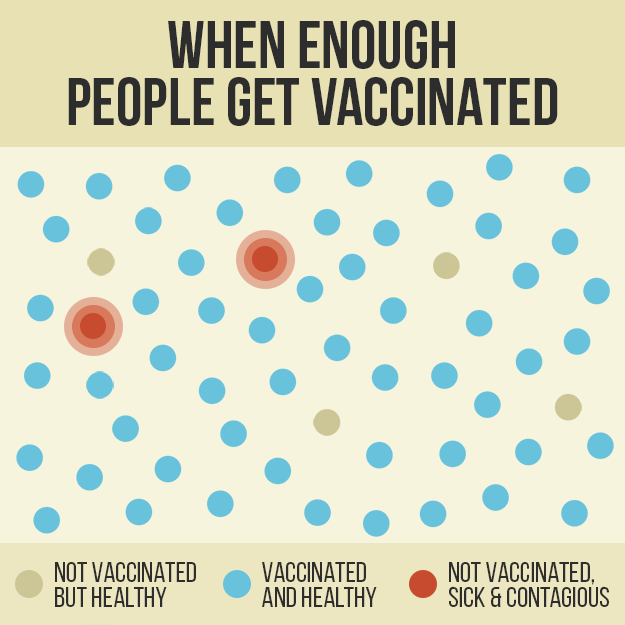
Alice Mongkongllite for BuzzFeed
In this GIF, the dots represent people: beige dots are people who aren’t or can’t be vaccinated; the blue dots represent people who are vaccinated; and the red dots represent people who are sick with the infectious disease (like measles).
When a community has herd immunity, it kind of looks like this. There may be a few sick people (red dots), but they’re surrounded by the vaccinated people in blue, meaning that the sickness can’t spread from person to person. These blue dot people protect the vulnerable people (in beige) who can’t get vaccinated due to age or health issues.
And here is a GIF that illustrates how contagious measles is:

Alice Mongkongllite for BuzzFeed
Researchers assign a “reproductive number” to different diseases. That number indicates how many people one infected person typically can spread the disease along to. The more contagious a disease is, the higher its reproductive number, and the more people need to get vaccinated in a community to achieve herd immunity. Measles has a reproductive number of 12 to 15. Ebola, in contrast, is less than 2.
“Measles is one of the most infectious pathogens — it certainly has a higher reproductive number than Ebola does,” O’Brien says. For measles, roughly 90 to 95% of the population needs to be vaccinated to keep the disease from passing through the community. That’s because one infected person can potentially infect between 12 and 15 unvaccinated people. And each of those people can potentially infected between 12 and 15 unvaccinated people. And so on.
Here is what happens if NO one gets vaccinated:
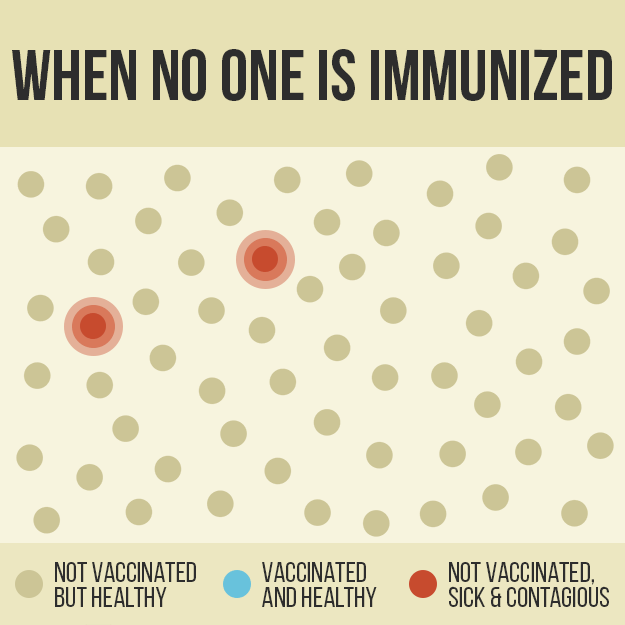
Alice Mongkongllite for BuzzFeed
This scenario shows what happens if even one person with a contagious disease enters a population where everyone is unvaccinated: The disease can run rampant. Not everyone will get sick, but a lot of people can and will.
And here is what happens when only some people get vaccinated — which is what is happening in certain communities in America today:
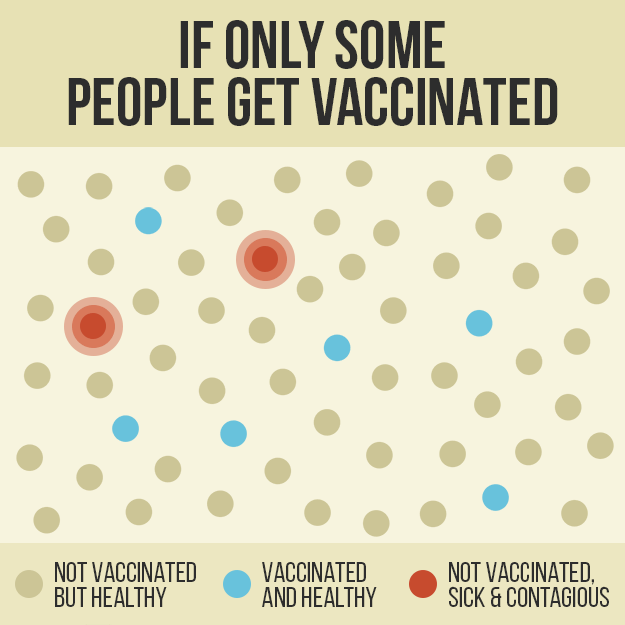
Alice Mongkongllite for BuzzFeed
This is similar to the scenario we’re looking at in certain communities dealing with measles right now. The percentage of the population that has been vaccinated has dropped below the necessary 90 to 95% threshold (in some cases much lower), to the point where the community no longer has strong herd immunity — only the people who have gotten vaccinated are protected (and since vaccinations aren’t 100% effective, even some of them can be susceptible to disease). This means that just one or two cases of contagious diseases can result in lots and lots of unvaccinated people getting sick — including both people who choose not to vaccinate by choice, and people who can’t vaccinate even if they wanted to.
And here is what it looks like all together:
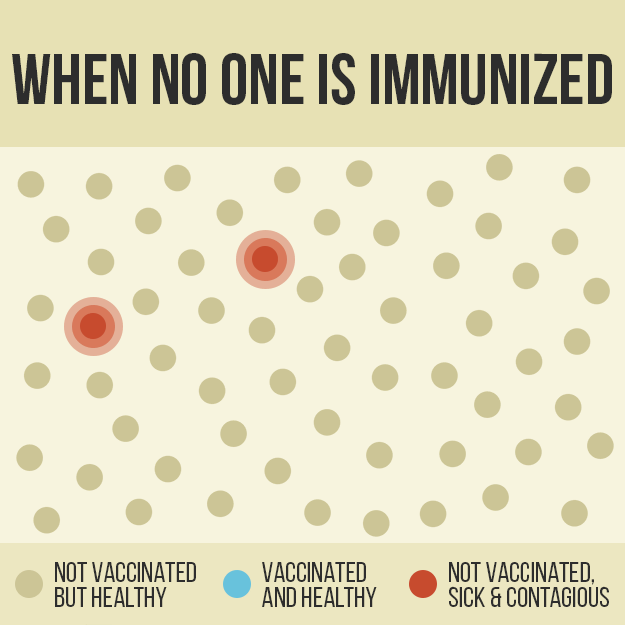
Alice Mongkongllite for BuzzFeed
Again: People who can’t get vaccinated rely on herd immunity to stay safe and healthy.
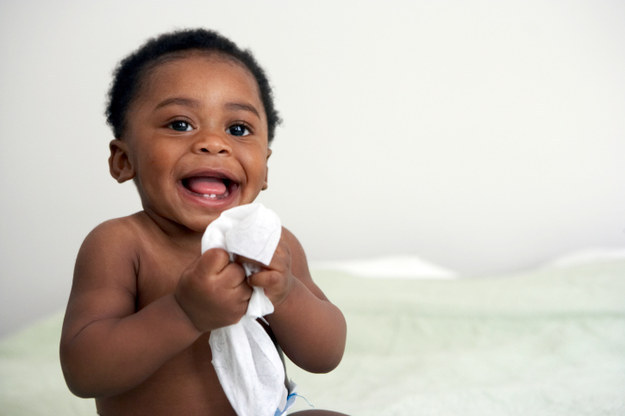
Rayes / Getty Images
People with cancer. People with genetic immunodeficiencies. People with allergies to vaccines. Babies. And others. Worth noting that immunocompromised people are also among the most vulnerable to complications from these diseases, Abramson says, precisely because their immune systems don’t work so well. So they can’t get vaccinated, but they really, really need to be protected from the disease.
And as for babies, of the 92 confirmed cases of measles in California from this current outbreak, 6 have been reported in children less than a year old, according to the California Department of Public Health. They got sick with measles before they were able to be vaccinated against it.
correction
Dr. Jon Abramson works at Wake Forest Baptist Medical Center. An earlier version of this post misstated where he works. BF_STATIC.timequeue.push(function () { document.getElementById(“update_article_correction_time_4852665”).innerHTML = UI.dateFormat.get_formatted_date(‘2015-02-04 11:11:53 -0500’, ‘update’); });










